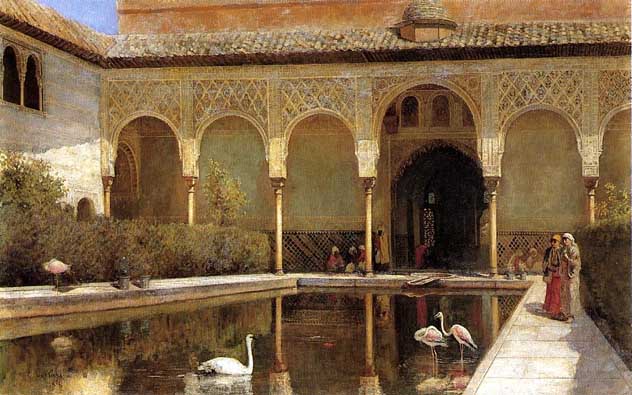
American Academic Classical Artist
1849 - 1903

Along with Frederic Arthur Bridgman, Edwin Lord Weeks is one of the most celebrated of the American Orientalist, this certainly being so during his lifetime, and although quite a lot is recorded concerning his professional career and travels, much of this from his own extensive travel writings, relatively little is known about his private life.
Weeks' parents were affluent spice and tea merchants from Newton, a suburb of Boston and as such they were able to accept, probably encourage, and certainly finance their son's youthful interest in painting and traveling. As a young man he visited the Florida Keys to draw and also traveled to Surinam in South America. His earliest known paintings date from 1867 when he was eighteen years old, although it is not until his Landscape with Blue Heron, dated 1871 and painted in the Everglades, that he started to exhibit a dexterity of technique and eye for composition - presumably having taken professional tuition.
Aged 21 he is known to have opened a studio in Newton, in the same year marrying Frances Rollins Hale from New Hampshire. The following year, accompanied by a friend, the illustrator A P Close, he traveled to Egypt, the Holy Land and Syria as far as Damascus. His sketchbooks from that visit overflow with North African scenes. However, at Beirut, Close died following a fever and was buried there. A painting depicting the port of Tangiers dated 1872 survive from this period and appear to be one of the first of his works in the Orientalist style. During a brief stay in Morocco around this time it is likely that he encountered the Scottish Royal Academician Robert Gavin (1827-1883) who lived and worked in Tangiers during the 1870's.

After Weeks' return to Newton, Boston journals published their description of his new subject matter and also enthusiastically critiqued an exhibition of his works held at the Boston Art Club - early evidence of his increasing stature as an artist, at least in his home town. The Boston Daily Evening Transcript of 23rd June 1874 announced that he would soon be embarking for Europe and a season in Paris before returning to the Orient to study the magnificent colors found there.
Having arrived in Paris together with his wife, Weeks attempted to enroll at the atelier of Gérôme in the École des Beaux-Arts. However, while waiting for his application to be accepted, he started to work in a private atelier, that of Léon Bonnat, a close friend of Gérôme who had also traveled with him in North Africa. Indeed when he was finally granted admission to Gérôme's atelier in September 1874, he was so satisfied with his studies with Bonnat that he decided to stay there and not accept the place offered. Although the Boston journals from then on started to call him "a student of Gérome" in fact he never was and he always referred to himself as a "student of Bonnat". However it is likely that he knew Gérôme socially.
Bonnat himself was only thirty-one years old at the time and an enthusiastic Realist Painter. His teaching methods were somewhat radical compared to those of the teachers at the École and he expected his students to paint as well as to draw, placing less importance in the study of the details of human form and more on the whole body as an idealized subject.
He was also a conscientious teacher and attended the atelier in person more than the regulatory minimum of two mornings per week, even inviting students to his home on Sundays. It is thought that Weeks stayed with him for about a year-and-a-half and he doubtlessly absorbed the realist style of depicting a subject's characteristics and also the methods of working out of doors (en plein air) to study the effects of natural light and shadow - ideal training for painting ethnic scenes.
The precise details of Weeks' travels over the next few years are not well documented, however he returned to Cairo in the spring of 1875, the following autumn going to Morocco in all likelihood having spent the summer in Paris. Upon his return to America, in February 1877 he held an exhibition at the Noyes and Blakeslee Gallery in Boston. It was very well received and, according to the Boston journals, the resultant sales were sufficient to finance a voyage of several years to India. But this was not yet to be and he returned to Paris where he commenced a work - A Moroccan Camel Driver - destined for the 1878 Salon - his first Salon exhibit. He then got ready to spend a long winter in Morocco, the details of which were published in Scribner's Magazine in 1901.

Wanting to avoid the northern ports frequented by tourists, he planned to visit Rabat on the Atlantic coast and so crossed the Straits of Gibraltar accompanied by his wife, landing at Tangiers, where his friend Robert Gavin was living. He joined them on their journey. It was five days over land and across the flooded rivers (a coaster could have made the journey in a day!) and, not expecting to find a hotel in Rabat, they took with them sufficient supplies for a three month stay. However, reaching Rabat, they found the region to be stricken with famine. Not deterred and, through the ingenuity of their servants from Tangiers and their foreign currency, they embarked upon the tactic of distributing bread to the needy, in return for which they would pose to be sketched and painted - something they might otherwise have been unwilling to do.
They decided to return to Paris in February, intending to arrive in time for the Salon. However a sand barrier prevented them boarding the coastal steamer so they planned to travel overland by camel. But the day of their intended departure both Weeks and his wife succumbed to typhoid fever and Gavin, who was apparently immunized, nursed them until the danger was over. It was not before spring that they boarded a ship carrying the British flag, and even then they were subjected to a violent storm on their return journey.
In spite of the discomfort and dangers of his visit to Rabat, Weeks returned to Morocco less than a year later. He wanted to visit the legendary towns of the interior and adverse circumstances had hindered his previous plan of traveling from Tangiers to Fez overland. This time he followed the coast to Mogador where he obtained the governor's permission to enter the interior of the country escorted by an armed guard as far as Marrakesh. There he obtained permission from the local potentate to draw in the streets. He was fascinated by the contrasts between the flourishing commercialism of the bazaars and the ancient monuments in a state of abandon.
Weeks didn't exhibit again either in America or at the Paris Salon until 1880 and then all his compositions were of Moroccan subjects and the prices asked were those of the best French painters of the time.
In 1883 he traveled to India and, according to his own letters, spent every day painting and every night developing his photographs, which he probably used for recording the architectural details and backgrounds for his compositions. He was to return again in 1892, commissioned by Harper's Magazine, this time accompanied by the journalist Theodore Child who was to write a series of articles on their travels with illustrations by Weeks.
Foreseeing a daunting overland journey, they planned to set off from Saint Petersburg and to take the Tran Caspian railway to Samarqand then descending via Herat to Afghanistan - a comfortable journey for the greater part, becoming more adventurous after Samarqand. However, an outbreak of cholera in the Russian provinces to the north prevented this and, instead, they decided to follow the ancient caravan route from Trebizond on the Black Sea as far as Tabriz and from there across Kurdistan.
They arrived in Trebizond in July 1892 and organized a caravan. They were advised by their guide to buy an araba (a large covered wagon, probably like those used by the pioneers of the American west). So, drawn by four horses, they set off in a south-westerly direction accompanied by two other arabas heading for Persia. However, barely had they set off when their horses became bogged down in a marsh, one almost going under completely. Fortunately the animal was rescued by the team from one of the other wagons.
Rather than camp in the open air they preferred to spend the nights either in khans (modest boarding houses) or in caravanserai, although there was little comfort and, along the roads, one accident followed another as the wagon was repeatedly damaged and the horses injured. They were also hindered by the assiduous attention of the Turkish functionaries checking their papers and passports in every town they arrived at. A week later they arrived at the border with Georgia and crossed the perilous pass of Taya, made even more dangerous since storms had transformed the dirt road into mud. Then ever onwards past Mount Ararat in Turkey, along Lake Urmia and over the border into Kurdistan they traveled.
Weeks found traveling through the Persian villages just as exciting as crossing the mountain passes. However, approaching Tabriz, they began to encounter one funeral procession after another, and then on arrival in the town, deserted streets - they had walked right into a cholera epidemic! However, they stayed there almost a month - his companion Theodore Child and their guide had been taken ill and needed to recover. But with winter approaching, they needed to move on, choosing their route carefully so as not to be cut off by the snow. They decided to set out for Tehran then to head south towards Isfahan and Shiraz, cutting across to Bushir, a port in the Persian Gulf, where they could catch a steam ship to India.
Having sold their araba, they traveled in Persian style, on horseback - a total of ten horses in their company, two for themselves and the other eight for their team and baggage. Weeks found the whole concept of traveling in this fashion highly satisfying and even romantic, pitching tent each night and recording their progress and the day's events then, after dinner, sitting under the awning of their tent to smoke as the sun set over the distant horizon.
They finally arrived at Tehran, a large cosmopolitan city endowed with a tramway and a sizeable foreign population. In contrast, Isfahan seemed to them very spread out and it took them an hour to pass through the surrounding villages and bazaars before reaching the central area. But the architecture was stunning and the air fragrant with the scent of ripe fruit.
Only a day or two after departing for Shiraz, Child began to show symptoms of typhoid fever and Weeks sent back to Isfahan for medication. But it was too late and Child died on the return journey. When Weeks resumed his journey to Shiraz he was equipped with a list of "contaminated villages" which the local consul had given him. At the gates of the city, notified by letter sent in advance, he was welcomed by two men and immediately transported into another universe - that of a foreign colony where one dined at a table and where "men dressed in white flannel played on tennis courts".
To get back to the Persian Gulf, Weeks had to cross the Kotal Mountains and peak 2250 metres (7382 ft) high on horseback. However, on 29th November 1892 on the marshy coast of Bushir, he boarded the steam ship Occidental and took leave of his Persian companions. He was headed for India.
He spent two years in India before returning home to Paris. His paintings of Indian life gave him celebrity both in France and America and they became his specialty. He was able to spend the next thirteen years in a splendid residence with a huge atelier on the Avenue de Wagram before moving nearer to the Bois de Boulogne.
In 1896 he was made a Knight of the Legion of Honour and he continued to paint right up to his death in 1903, which is thought to have been due to an illness contracted in India. An obituary notice described him as "a reserved man with a quiet voice and of rather small stature, but virile, kindly and affable".
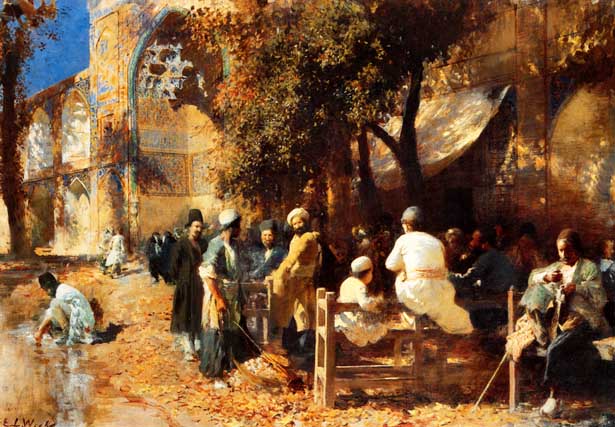
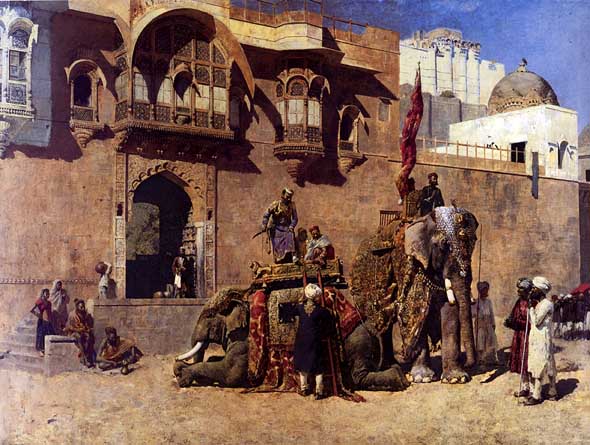
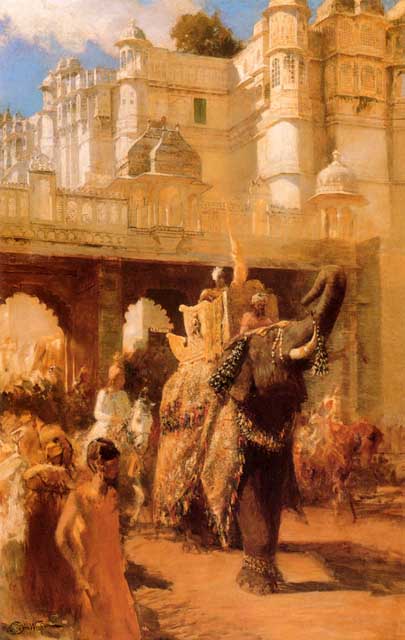
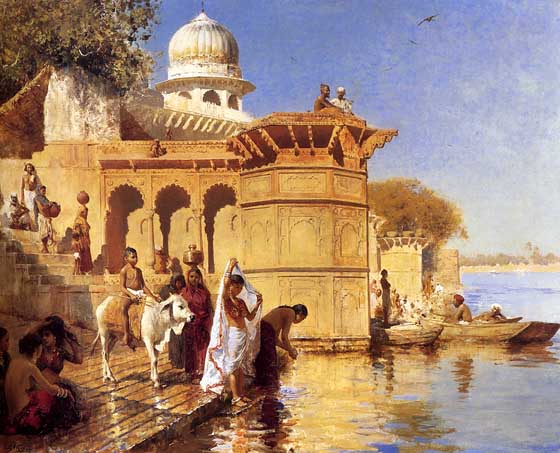
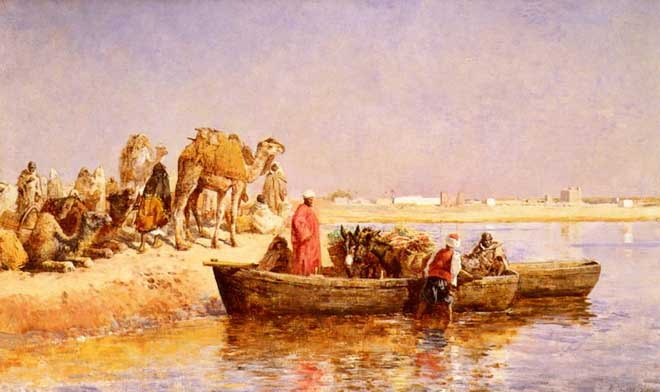
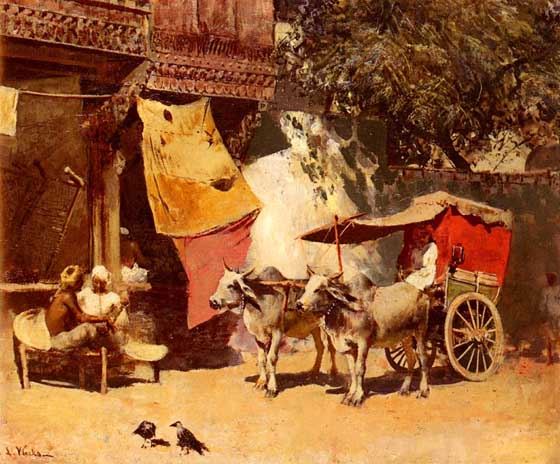
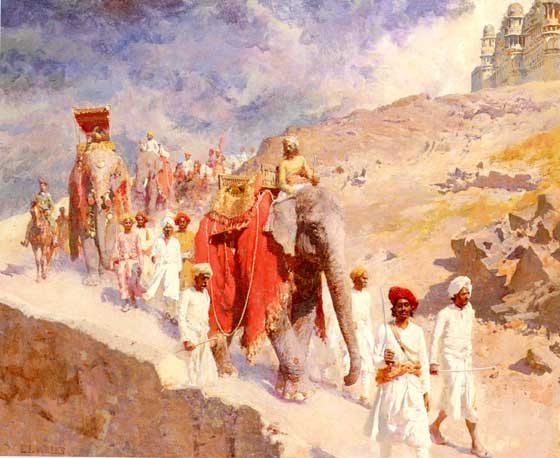
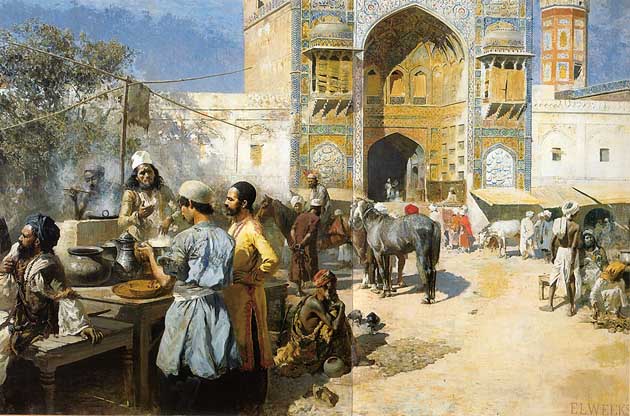


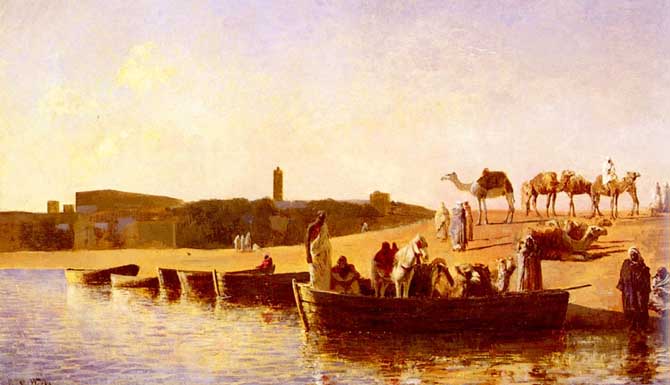

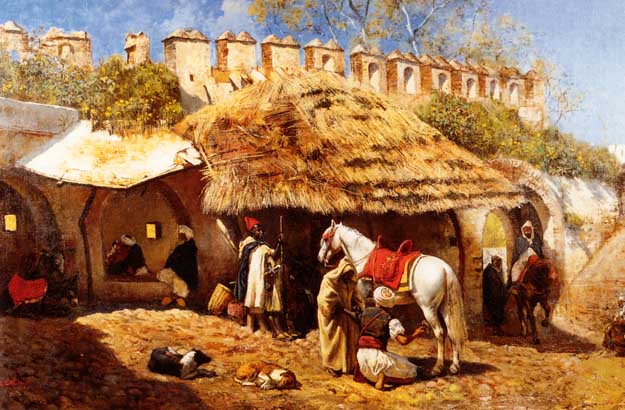

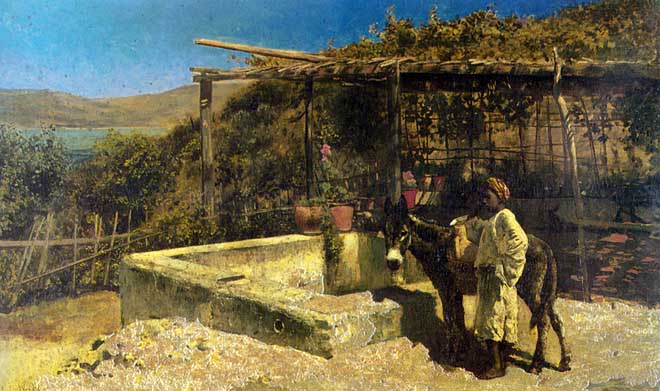
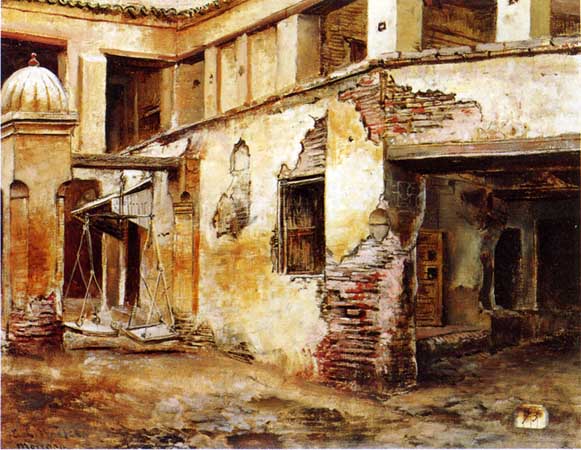
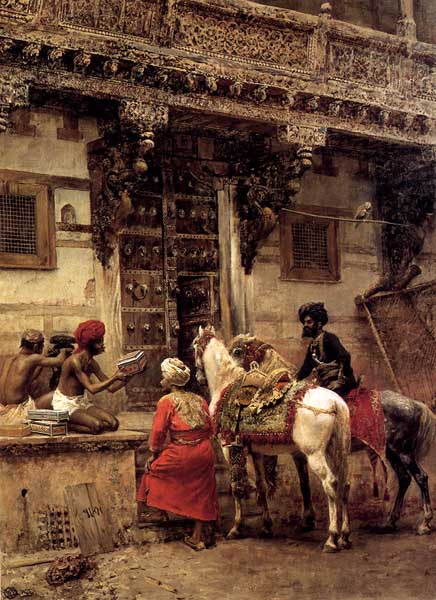
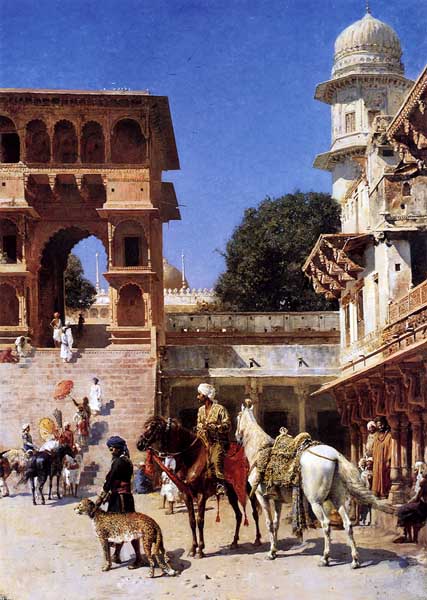
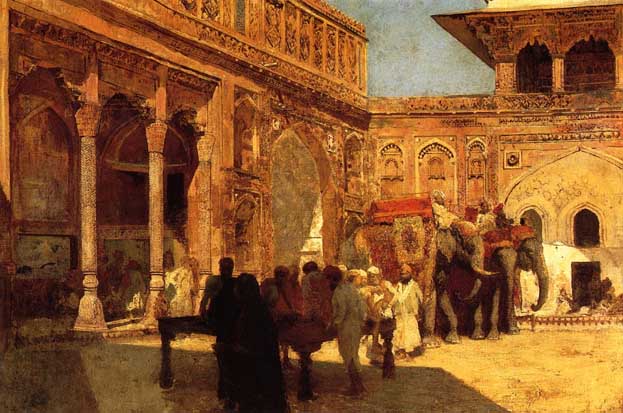
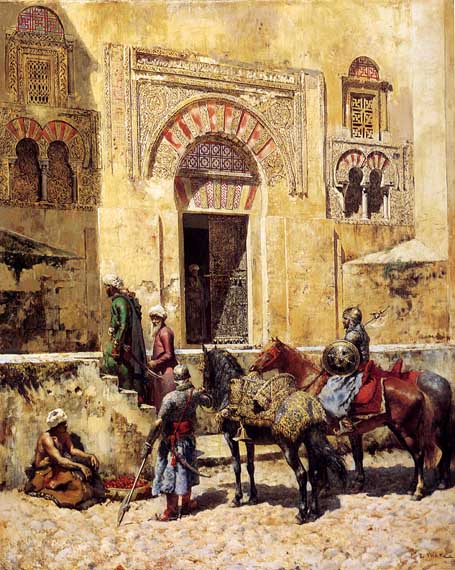
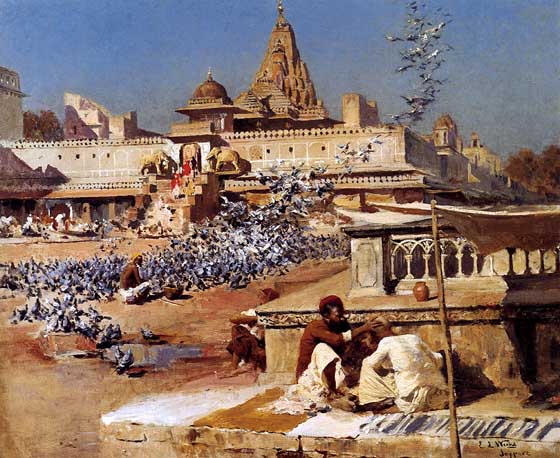
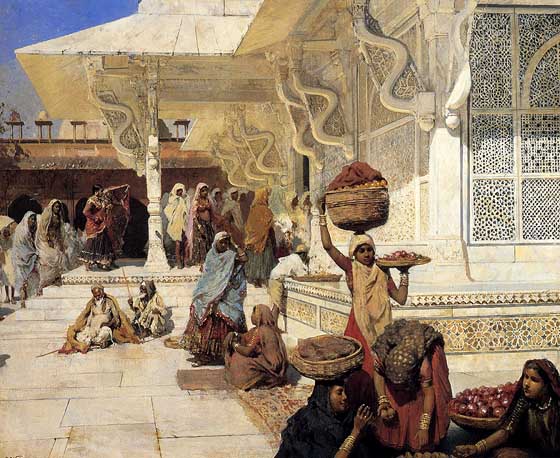
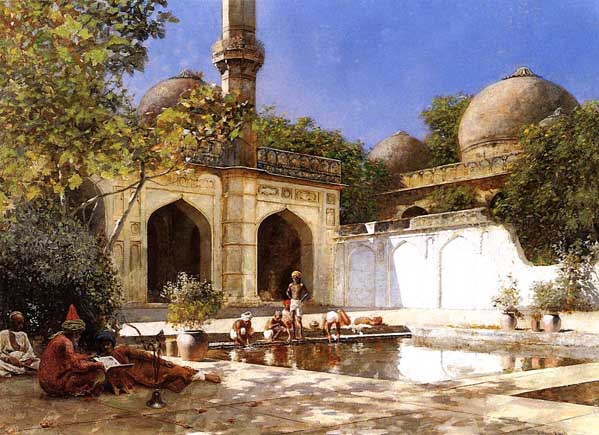
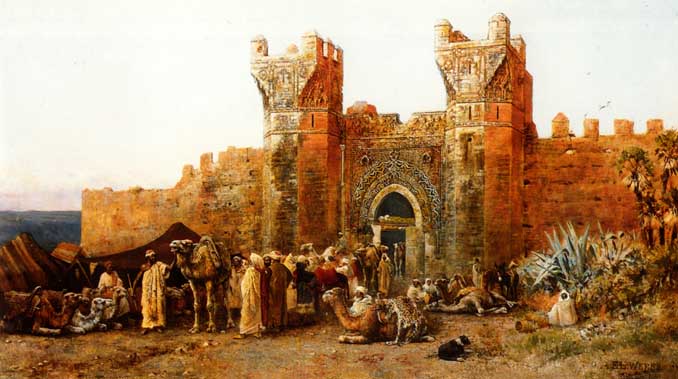
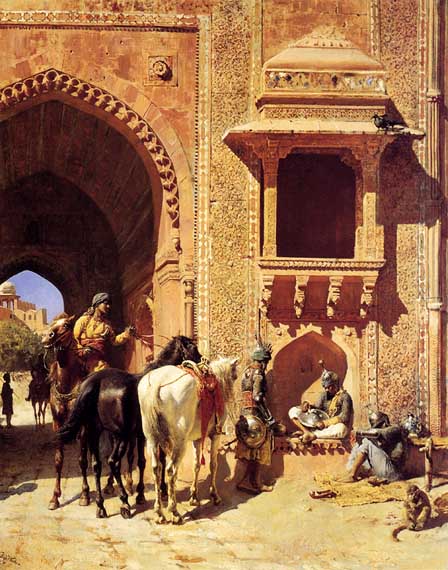
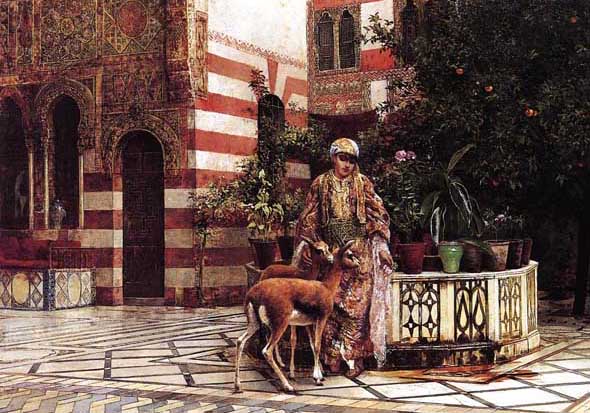
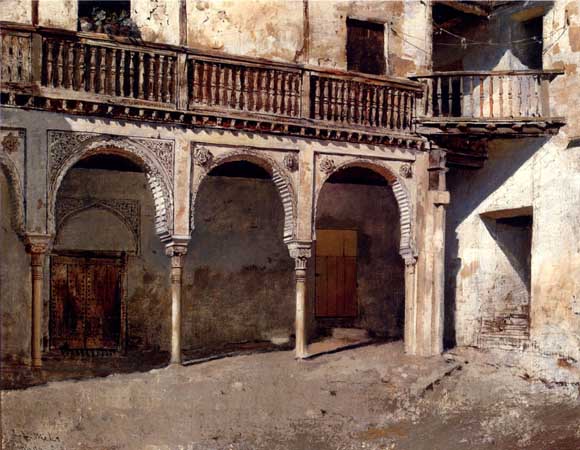
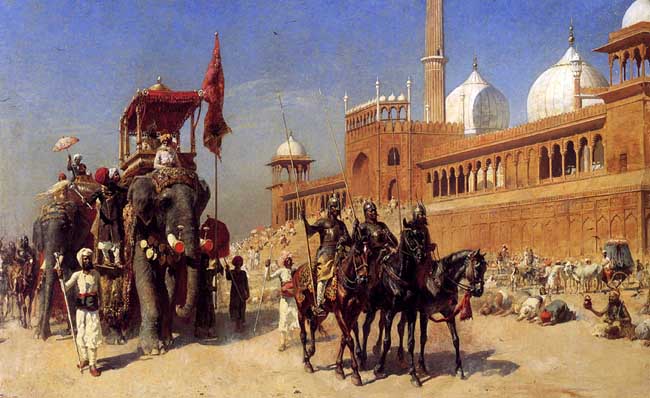



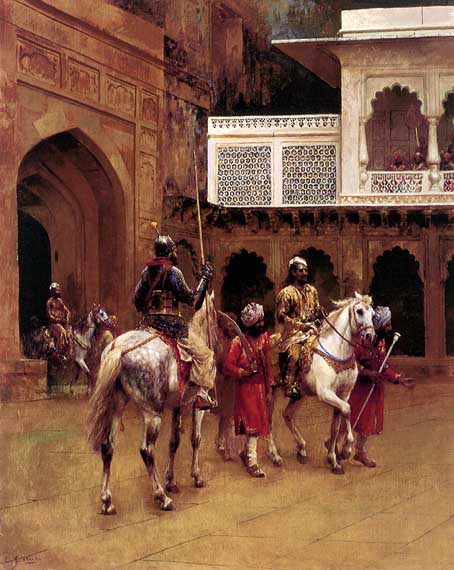
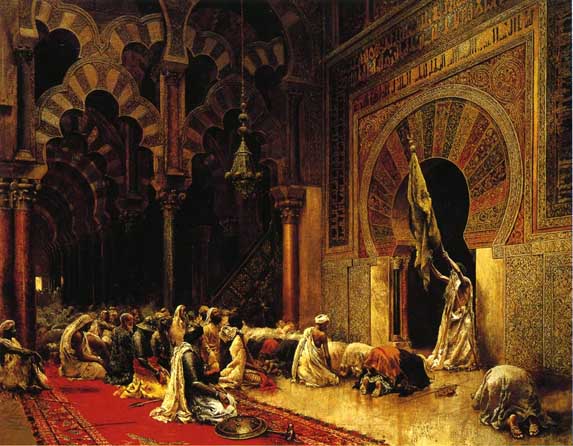
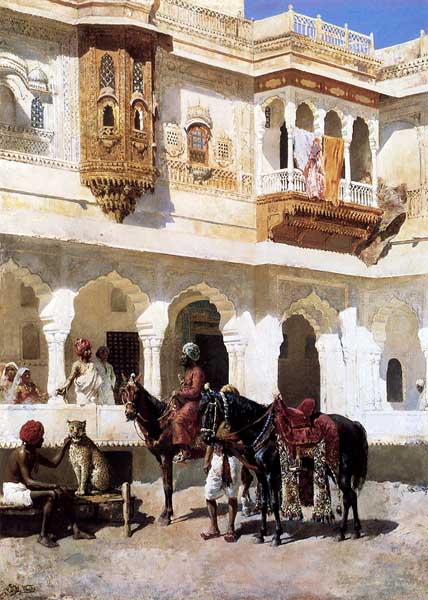

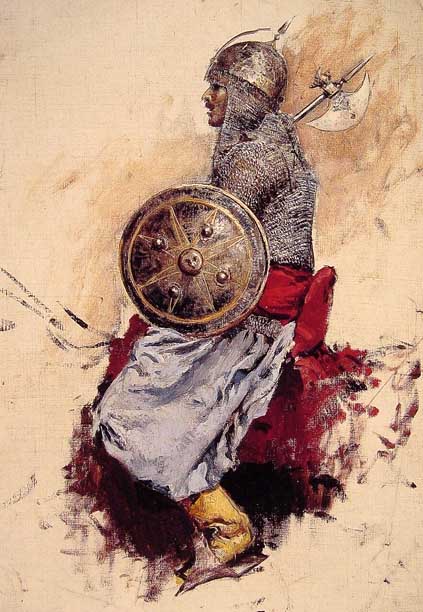
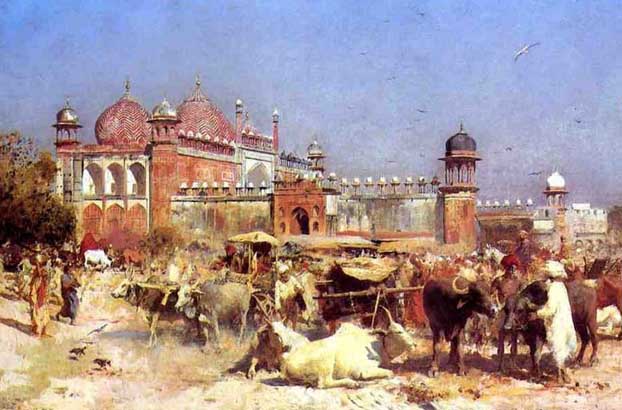
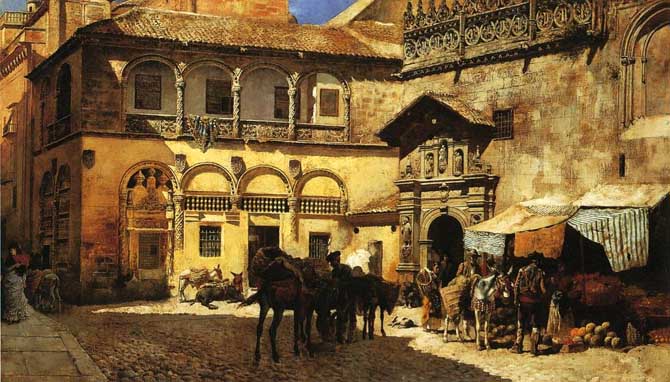
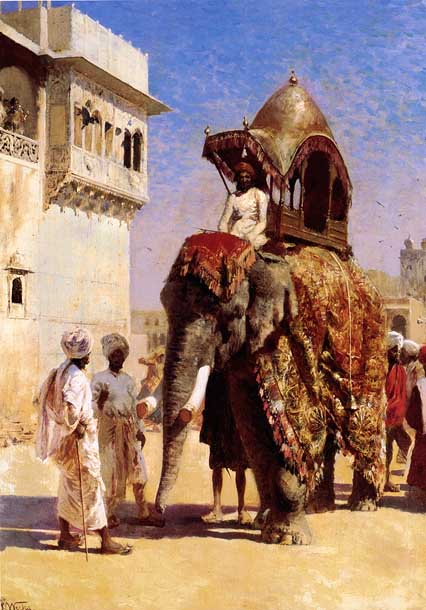
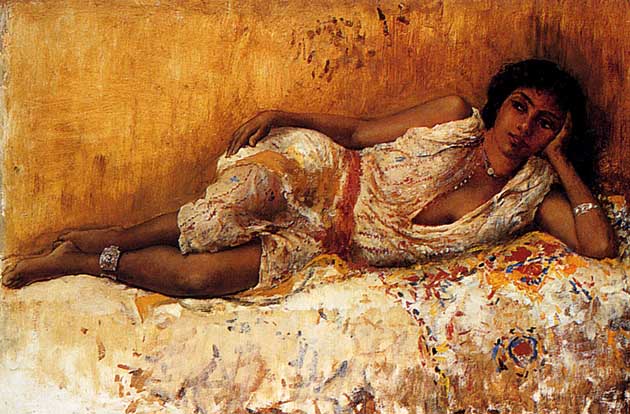
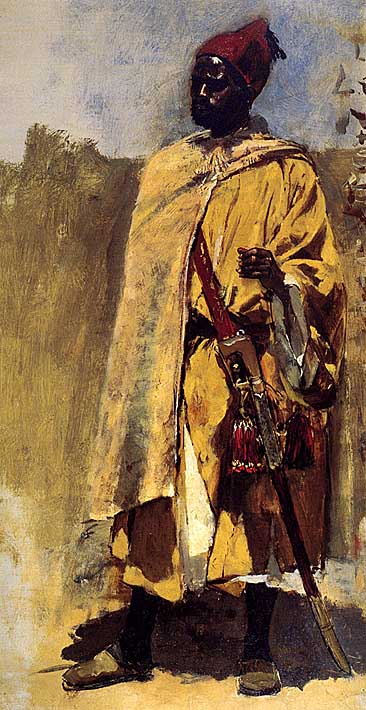
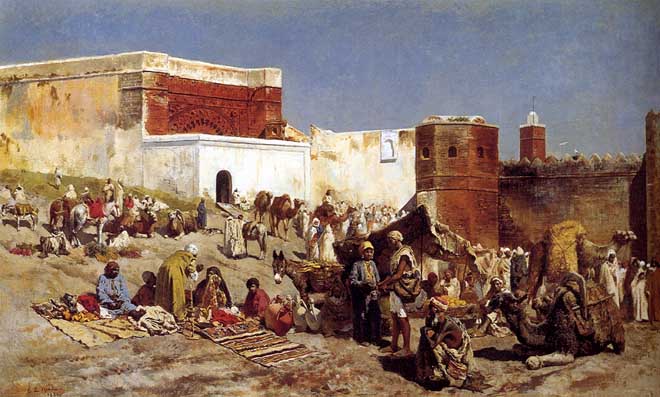
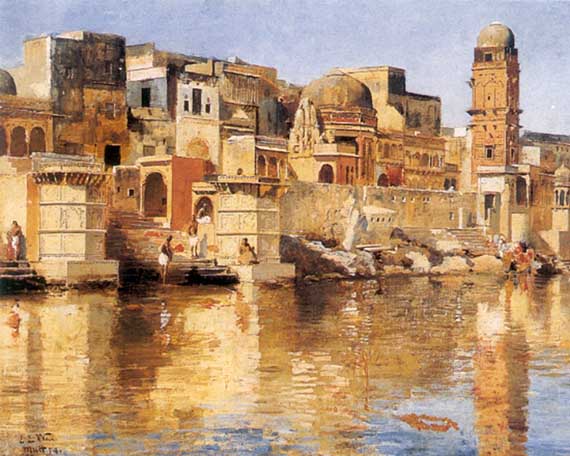
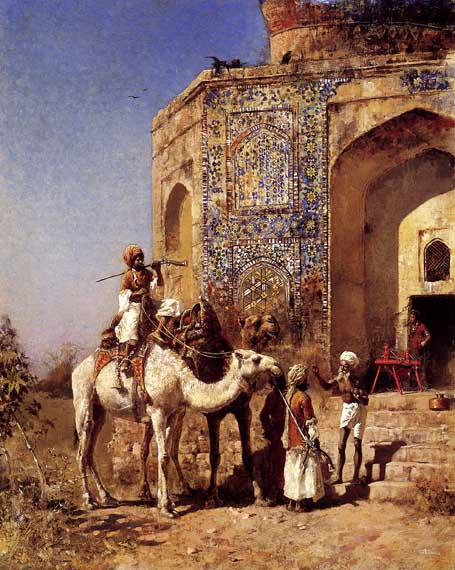
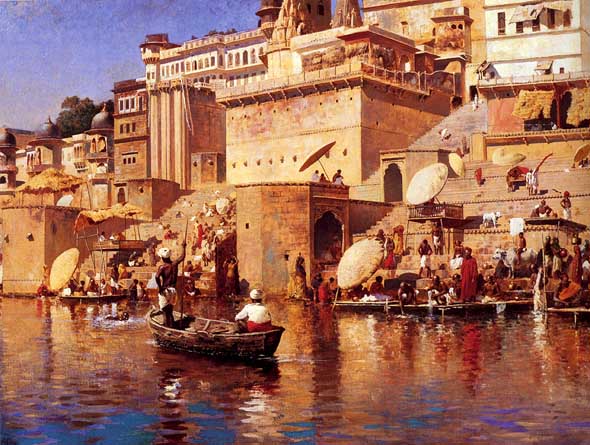
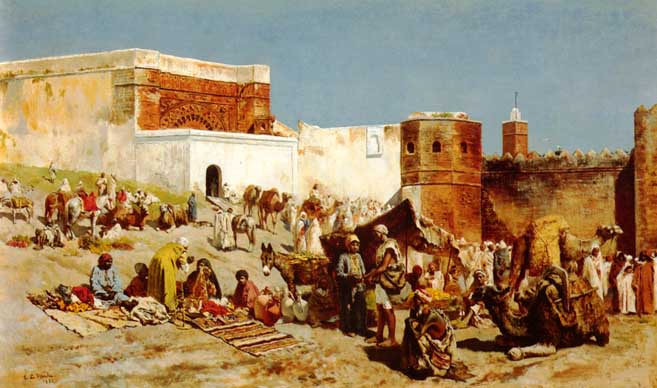
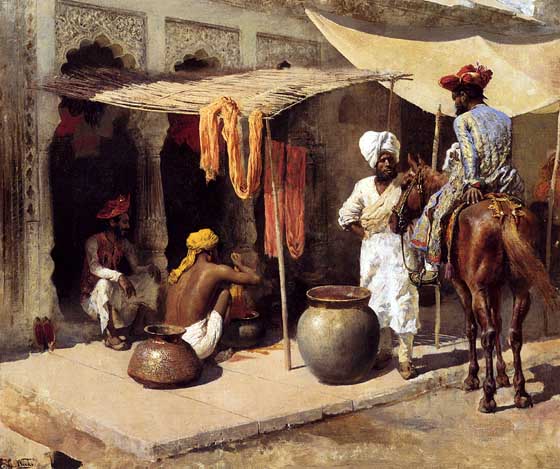
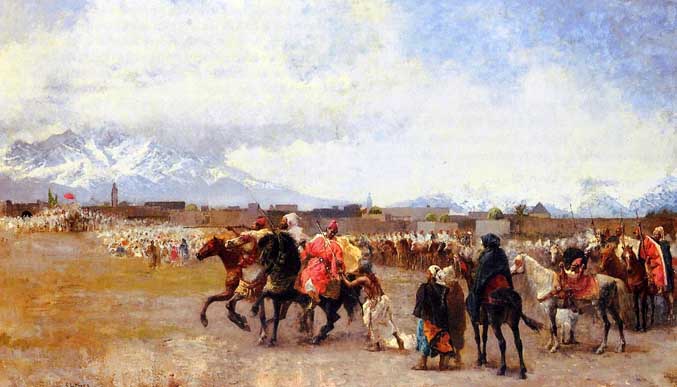
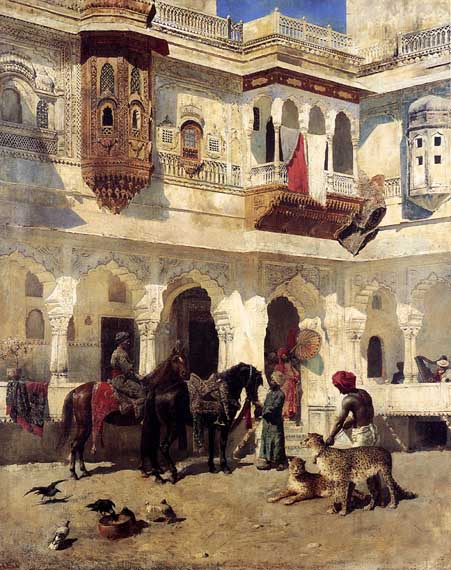
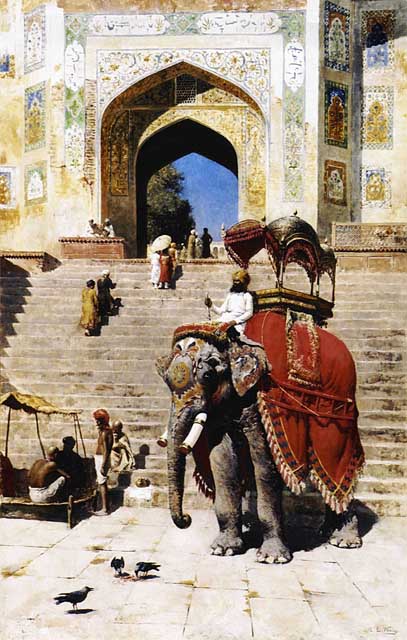
Situated adjacent to the Janmabhoomi temple complex, the impressive formation of the Jama Masjid creates a deep-seated intuition on the mind. This Masjid witnesses large turnout of devotees on all days and at the same time it happens to be a popular tourist attraction in Mathura today.
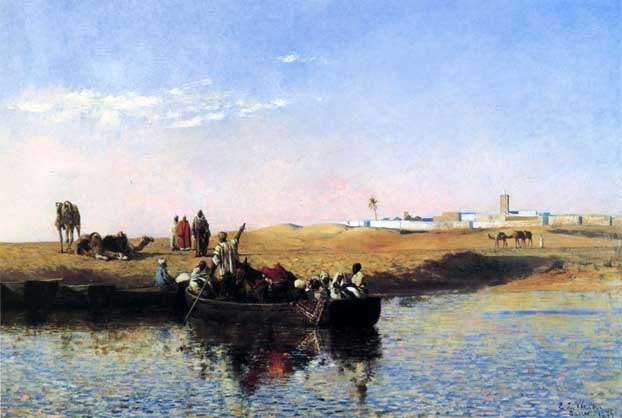
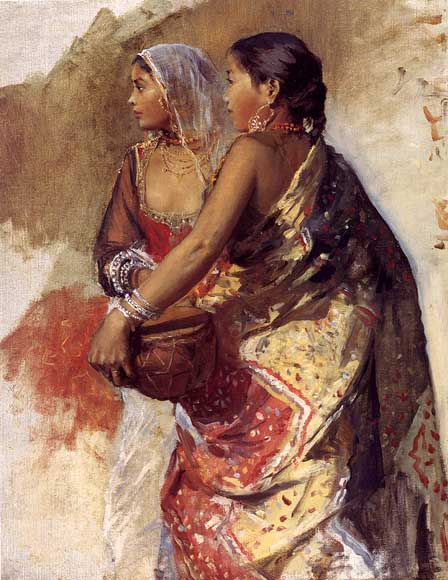

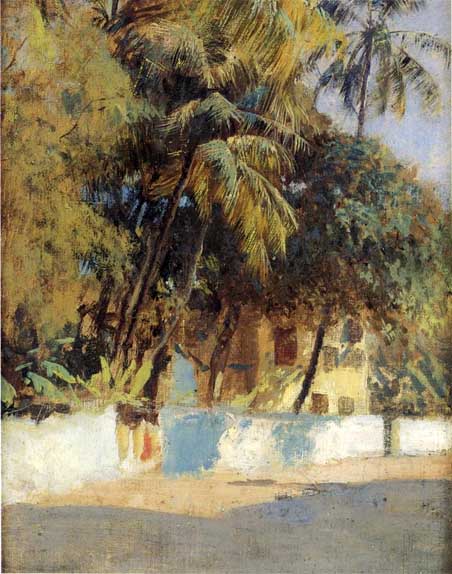
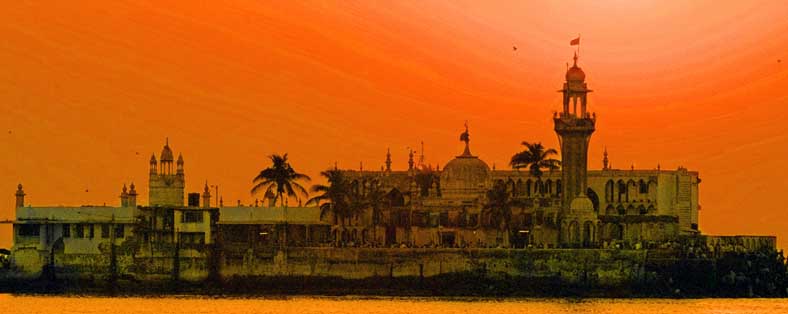
The dargah was built in 1431 (when Mumbai was under Islamic rule) by a wealthy Muslim merchant and saint named Haji Ali who renounced all his worldly possessions before making a pilgrimage to Mecca. Legend has it that Haji Ali died on his way to Mecca and his body, in its casket, floated back to Mumbai. However, some believe that Haji Ali drowned at the place where the dargah stands today.
As many as 40,000 pilgrims visit the shrine on Thursdays and Fridays.
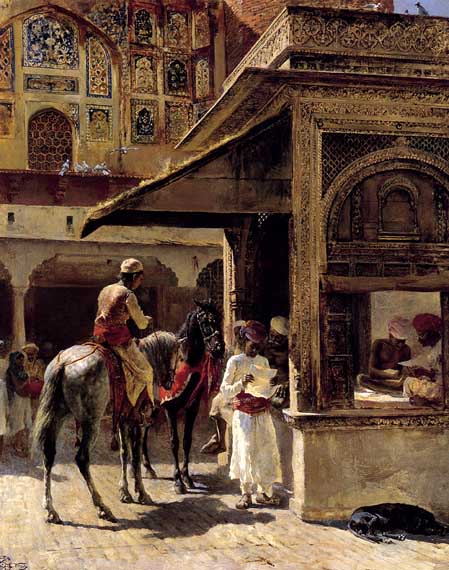


This city is the capital of the Marrakech-Tensift-El Haouz region.
Until a few decades ago, Morocco was known as Kingdom of Marrakesh by Arabs, Persians and Europeans. European names of Morocco, Marruecos, Maroc, Marokko are directly derived from the Berber word Murakush.
Marrakesh city has the largest traditional market (souk) in Morocco and also has one of the busiest squares in Africa and the world, Djemaa el Fna. The square bustles with acrobats, story-tellers, water sellers, dancers, and musicians, as well as drug lords by day; by night, the square turns into food stalls, becoming a huge open-air restaurant with busy life that include the infamous Ladies of the Night (prostitutes).
Marrakesh is the third largest city in Morocco after Casablanca and Rabat. It was known to early travelers as "Morocco City." Prior to the advent of the Almoravids in the 11th century, the area was ruled from the city of Aghmat. The Almoravid leader, Abu-Bakr Ibn-Umar decided Aghmat was becoming overcrowded and chose to build a new capital. Being a nomad from the Sahara Desert, he decided to build it in the plains, away from the mountains and rivers. He chose the site of Marrakech, because it was in neutral territory between two tribes who were vying for the honor of hosting the new capital. Work started in May 1070, but Abu-Bakr was recalled to the Sahara to put down a rebellion in January 1071 and the city was completed by his deputy and eventual successor Yusuf ibn Tashfin. The city experienced its greatest period under the leadership of Yacoub el Mansour, the third Almohad Sultan. A number of poets and scholars entered the city during his reign and he began the construction of the Koutoubia Mosque and a new kasbah.

Prior to the reign of Moulay Ismail, Marrakech was the capital of Morocco. After his reign, his grandson moved the capital back to Marrakech from Meknès.
For centuries Marrakesh has been known for its 'seven saints.' When Sufism was at the height of its popularity, during the reign of Moulay Ismail, the festival of the 'seven saints' was founded by Abu Ali al-Hassan al-Yusi at the request of the sultan. The tombs of several renowned figures were moved to Marrakesh to attract pilgrims in the same way Essaouira did at that time with its Regrega festivals. The 'seven saints' (sebaatou rizjel) is now a firmly established institution, attracting visitors from everywhere. The seven saints include Sidi Bel Abbas (the patron saint of the city), Sidi Muhammad al-Jazuli, Sidi Abu al-Qasim Al-Suhayli, Cadi Ayyad ben Moussa, Abdelaziz al-Tebaa and Abdallah al-Ghazwani.
Marrakech was dominated in the first half of the 20th century by T'hami El Glaoui, Lord of the Atlas and Pasha of Marrakech. The poet of the city was Mohammed Ben Brahim, his favorite place was café Al-Masraf. The poems and songs of Ben Brahim are still known by heart by many Marrakshi.
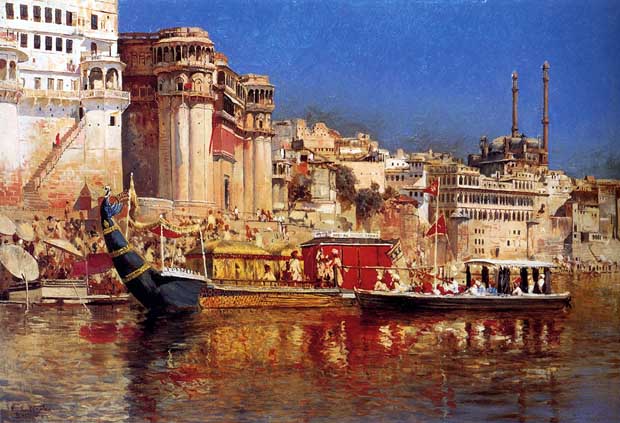

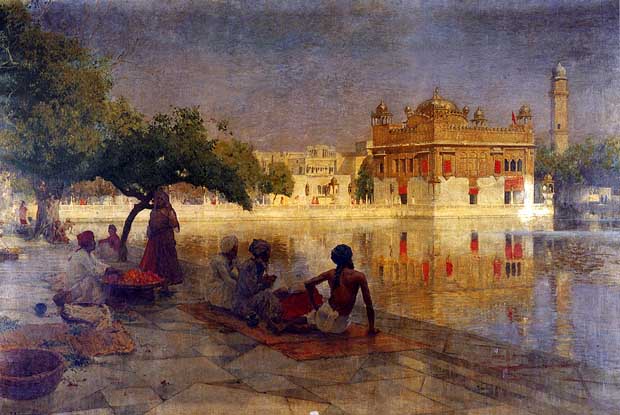
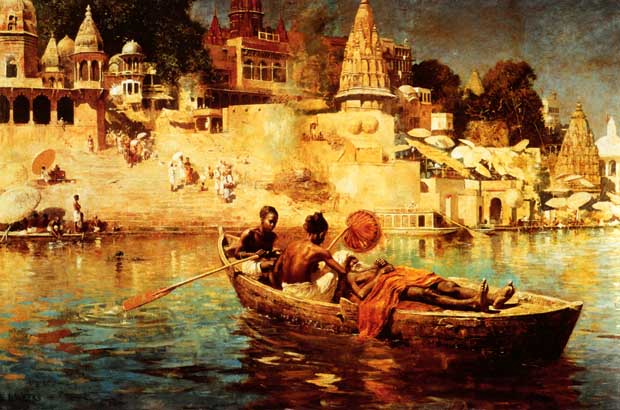
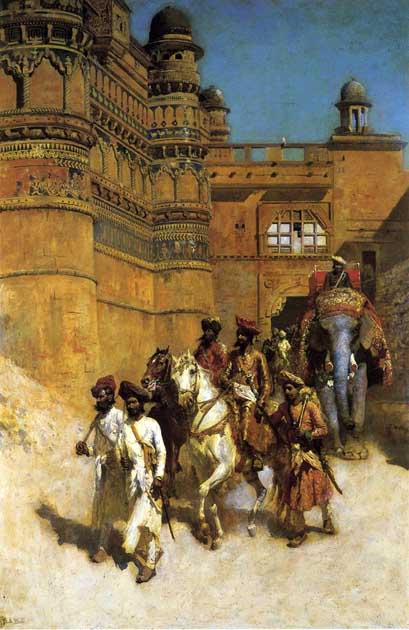
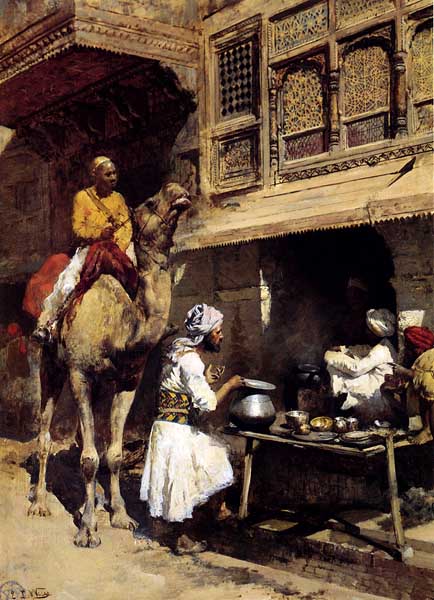
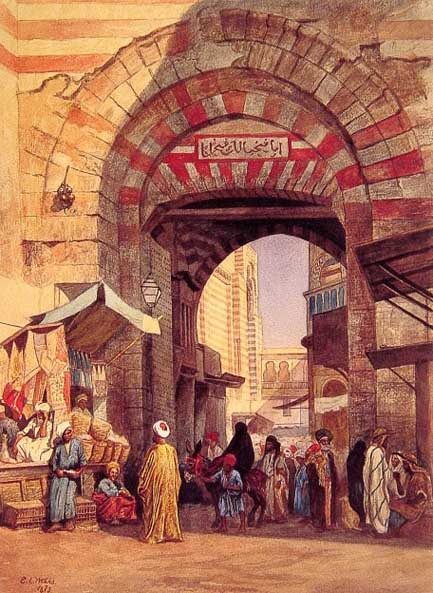
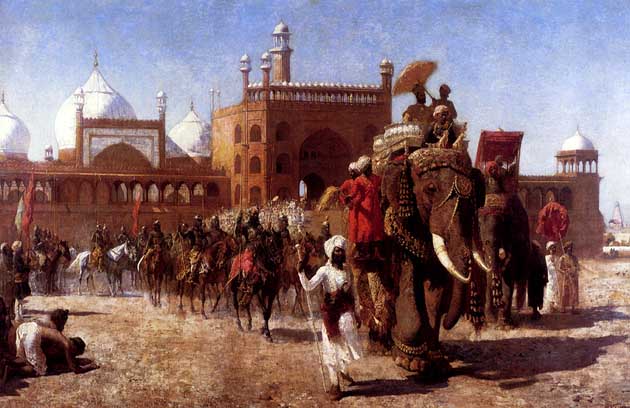
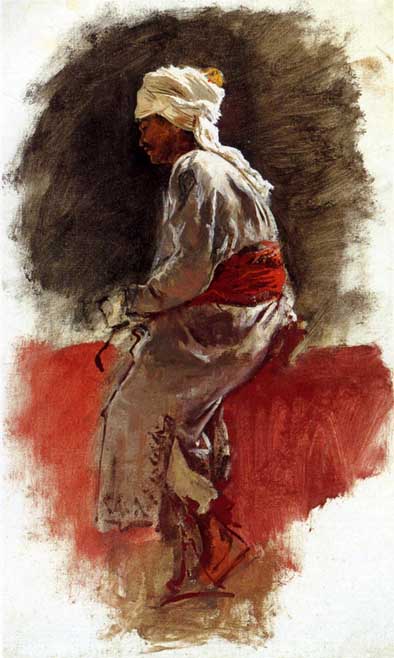
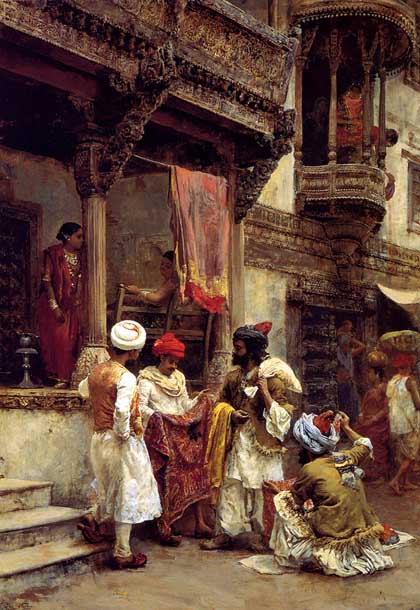
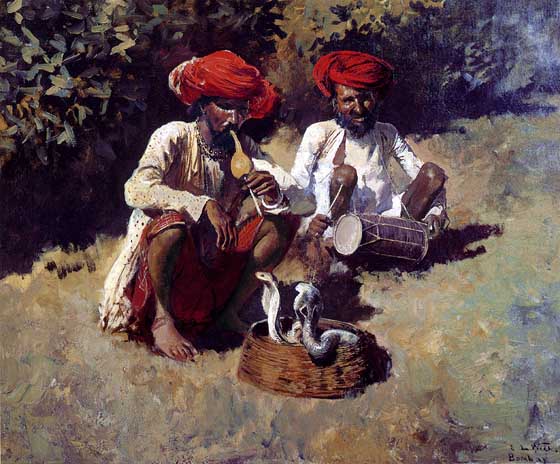
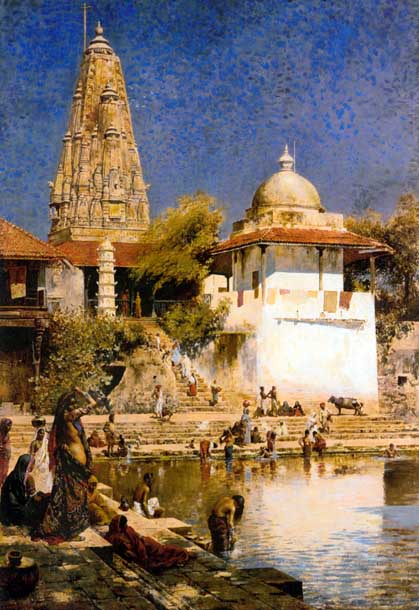
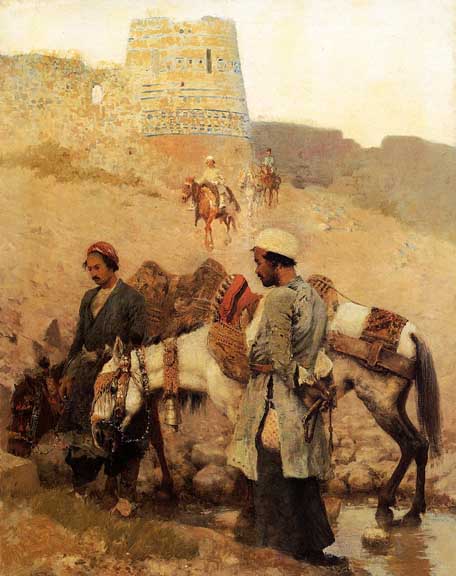
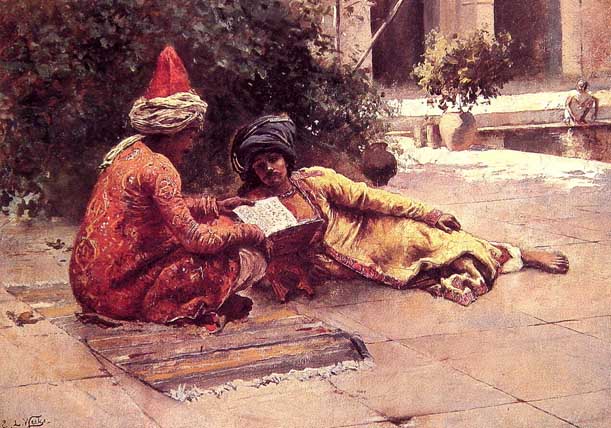
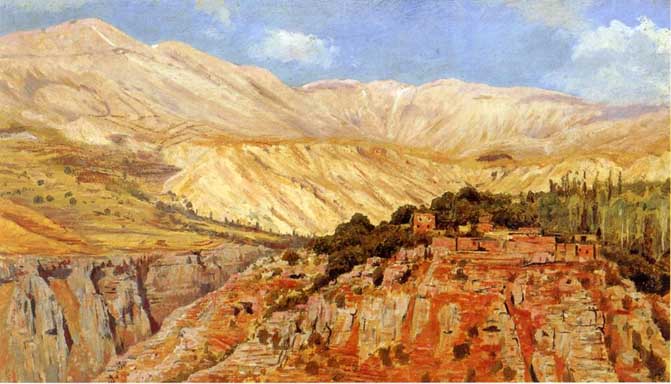
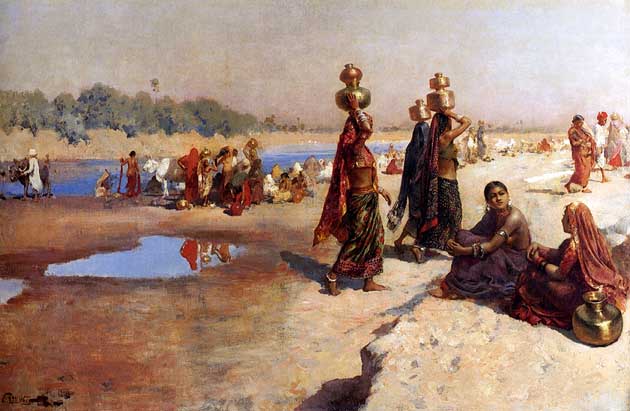
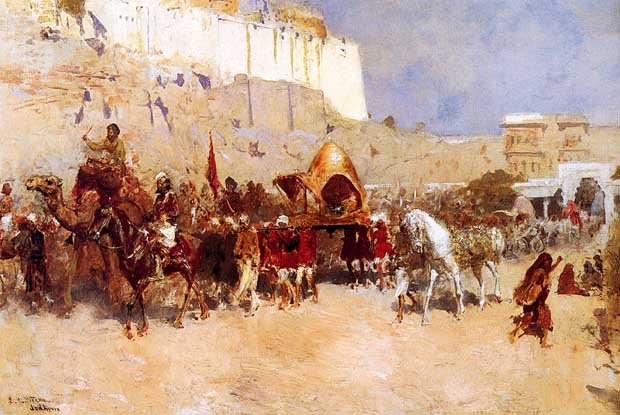


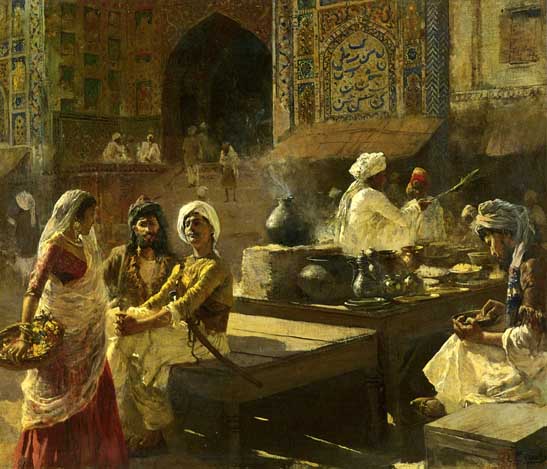
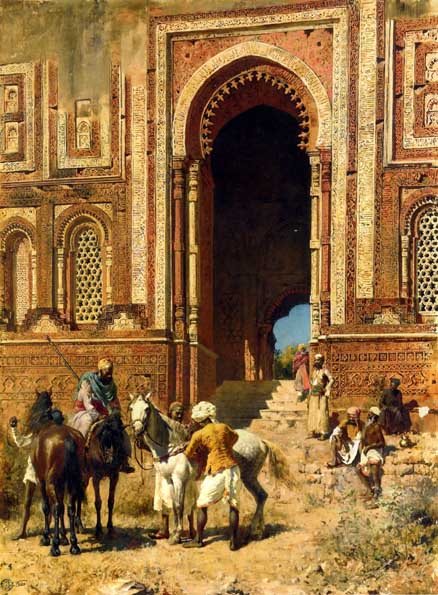
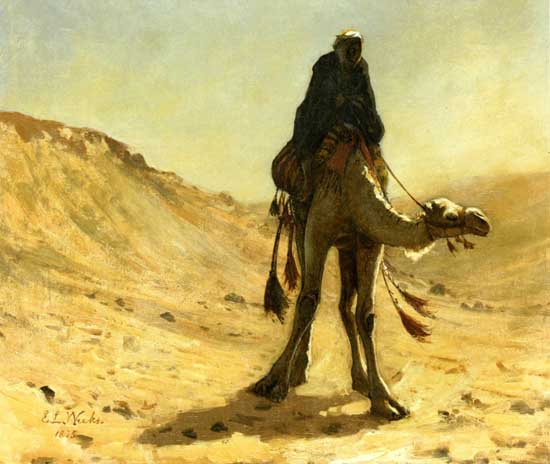
Source: Art Renewal Center
Source: Edwin Lord Weeks - The Complete Works
Return to Pagina Artis
Return to Bruce and Bobbie's Main Page.